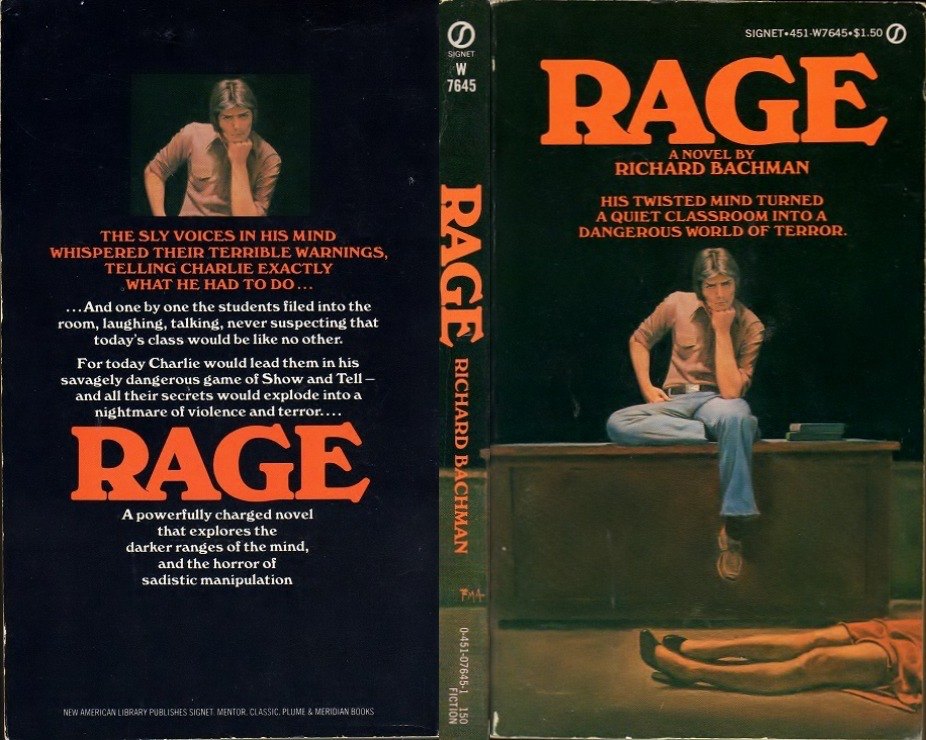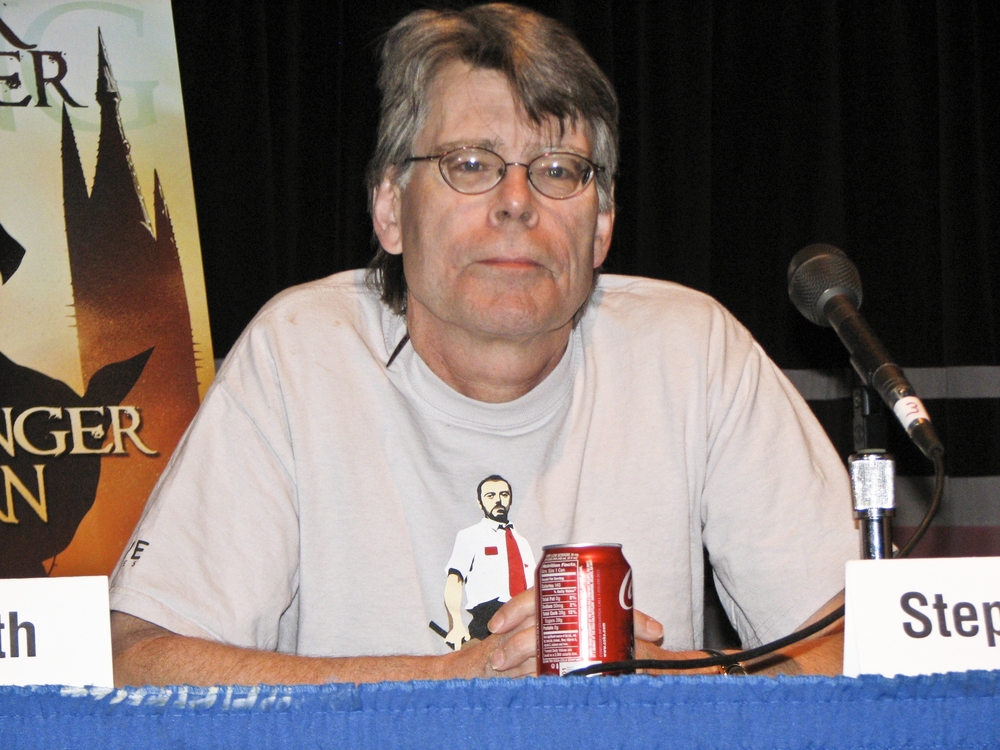Horror fans won’t find one particular novel on bookstore shelves. The book “Rage” vanished from publication at its author’s request. It remains one of the most contentious works in Stephen King’s extensive bibliography. Published in 1977 under the pseudonym Richard Bachman, “Rage” follows a troubled high school student who shoots his algebra teacher and takes classmates hostage. The plot might sound like typical horror fiction. However, the reality behind this book’s removal disturbs readers more than any fictional monster the author has created.
The Dark History Behind Stephen King’s Troubling Novel

The author wrote “Rage” during his high school years. He drew from feelings of alienation and social anxiety that many teenagers experience. Through this emotional foundation, the novel portrays Charlie Decker with considerable sympathy. Rather than presenting him as simply villainous, it delves into his troubled mind and methodically explores the various psychological and environmental factors leading to his violent outbreak.
“Is it really so surprising that they would find a soul brother in the fictional Charlie Decker?” King later wrote in his essay “Guns,” reflecting on how certain readers connected with the character. “But that doesn’t mean we excuse them or give them blueprints to express their hate and fear.”
The writer never anticipated his fiction would cross into reality. However, several real-life school shootings in the 1980s and 1990s had disturbing connections to the novel. In fact, literary experts note the first documented case occurred in 1988. During this incident, a student brought a firearm to school and took a classroom hostage. Disturbingly, his actions mirrored the book’s plot in frightening detail.
When Fiction Inspires Tragedy

The incidents didn’t stop there. In 1997, another student shot eight classmates at a Kentucky high school. Three died from their wounds. Investigators found a copy of “Rage” in his locker.
This tragedy became the breaking point for Stephen King. He recognized the potential harm his early work might cause. The novelist then made a decision almost unheard of in publishing. He asked his publisher to permanently remove the book from print. “Charlie had to go. He was dangerous. And in more ways than one,” he explained in his essay, acknowledging his responsibility as an author.
Rare Collector’s Items With Troubling History

Today, first-edition copies of “Rage” have become rare collectors’ items. They sometimes sell for thousands of dollars. Book collectors report that pristine first-edition copies fetch as much as $4,000 on the secondary market.
The book once appeared in “The Bachman Books,” a collection featuring four novels written under the pseudonym. Later editions removed “Rage” entirely. This makes original copies that include it increasingly valuable. Hardcore fans now hunt for these rare editions. This creates an uncomfortable situation. A book withdrawn specifically because of its potential harm has become more coveted precisely because of that notoriety.
Stephen King’s Response to Real-World Violence

His decision reflects a broader pattern of media responding to real-world violence. Entertainment industry analysts point to numerous examples. Popular TV shows shelved episodes following the Columbine shooting in 1999. Other programs pulled content after the Virginia Tech shooting in 2007. More recently, streaming platforms added content warnings following the tragic school shooting in Uvalde.
The difference with “Rage” stands out clearly. The author’s response wasn’t temporary. He permanently removed the book from circulation. He acknowledged that some stories might carry too much potential for harm, regardless of artistic merit. King’s action mirrors director Stanley Kubrick’s decision about “A Clockwork Orange.” Cultural historians note Kubrick withdrew his film from UK distribution until after his death due to concerns about copycat violence.
A Responsible Choice in an Age of Violence

School shootings were virtually unheard of when the novel was written in the 1970s. They have tragically become commonplace in American society. The horror master recognized the changing context. What readers once viewed as pure fiction had transformed into something potentially dangerous.
Literary analysts note his practical approach to the problem. “It’s impossible to stop people from doing terrible things and no amount of censorship, self-imposed or otherwise, will change that,” but as noted in his essay, it’s best not to provide “accelerant” to those already harboring violent thoughts.
Stephen King built his career exploring humanity’s darkest impulses. This acknowledgment demonstrates remarkable self-awareness. His willingness to permanently shelve his creation speaks volumes. It shows his understanding of fiction’s power and an author’s responsibility to their audience.
The Legacy of a Banned Book

The story of “Rage” raises complex questions about art, influence, and responsibility. Most readers engaged with the novel without harmful effects. Nevertheless, the author eventually recognized a crucial fact: despite the majority’s harmless reception, for a vulnerable few, the book’s sympathetic portrayal of a school shooter might inadvertently normalize violence. He continues to write disturbing content with morally complex characters. His novella “Apt Pupil” explores similarly dark psychological territory. Yet “Rage” stands alone. It remains the only work Stephen King has deliberately removed from circulation.
Collectors who find an old copy of “Rage” possess a rare piece of literary history. The book’s absence from shelves represents something more important. It shows an author’s recognition that responsibility must sometimes outweigh artistic freedom or profit.
Publishers routinely revive out-of-print books when their authors achieve greater fame. Literary scholars praise his stance. He keeps “Rage” unavailable despite its potential profitability. This demonstrates a moral position worthy of respect. The story behind this withdrawn Stephen King novel provokes more thought than many works still in print. Its absence speaks volumes. It highlights the evolving relationship between fiction and reality in our troubled times.
Read More: Stephen King’s Netflix series recommendation is leaving viewers ‘scared for their lives’

